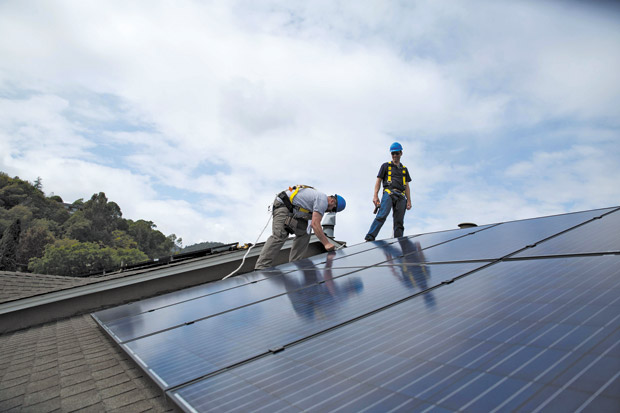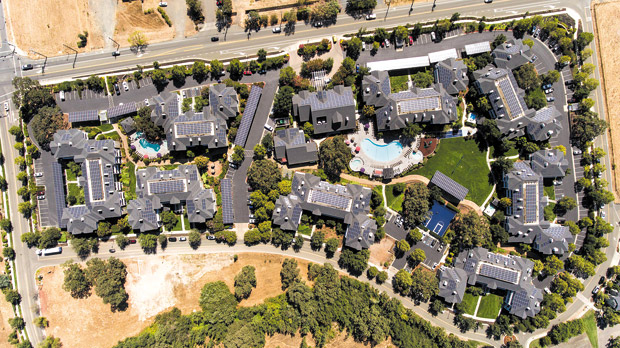Debunking solar myths
Home solar panels can drastically cut or even eliminate electricity bills, reduce a home’s carbon footprint, increase re-sale value, and may even help a home sell faster.The cost of rooftop solar systems has fallen dramatically in recent years, and most homeowners have the option of buying the system, leasing it on reasonable payment terms, or having a third-party pay for and install the system at no up-front cost at all for the homeowner. Plus, home solar systems are eligible for federal tax credits.
All of this explains why the number of homeowners installing solar has skyrocketed across America. Nevertheless, many homeowners remain skeptical about taking control of their energy use and installing solar. Why? The various myths that still persist around solar power could be the reason.
“Solar technology has been around for a long time, but even though it’s entered the mainstream, many homeowners are still skeptical,” said renewable energy expert Roger Ballentine, president of Green Strategies, a leading Washington-based consulting firm. “That’s because a number of myths persist, pointing to the need for better consumer education about the benefits of home solar installations.”
Ballentine pointed to private and government studies providing real information that debunk the myths surrounding solar power. Here are common myths, and why you shouldn’t believe them:
• Myth 1: Solar panels only work if you live in a warm, sunny climate.
While solar panels work best when they get a lot of sun, a lack of bright sun doesn’t mean they’re not working. Panels can still absorb ambient sunlight, even on cloudy days or in regions that get less bright sun. What’s more, today’s solar panels are more energy efficient than ever. Newer systems like the LG NeON R maximize sunlight absorption and generate the maximum possible output — as much as 26 percent more than other comparably sized solar panels. This higher efficiency means that solar panels can work in virtually any climate and every season.
• Myth 2: You need a lot of roof space for solar panels. Just like other amazing technologies, solar panels are getting smaller, more powerful and more efficient. High-efficiency panels take up less space because fewer panels are required to produce the electricity needed to power your home. So even a smaller home could have enough roof space to fit the number of panels needed to generate the necessary power and save you money.
• Myth 3: Installation is a long, drawn-out hassle. While adding solar panels to your home isn’t a do-it-yourself project, installation usually takes only a day or two. New models streamline the process further, eliminating the need to install a separate inverter. Most solar panels require a separate inverter to bring electricity into your house, but new panels from LG, for instance, incorporate the inverter, simplifying and accelerating the installation process.
• Myth 4: If something goes wrong, you’re on your own. As with any major investment in your home, you should make sure you understand the manufacturer and installer warranties for your solar panels, including how long the coverage lasts and what types of problems are covered. A solar installation also has no moving parts to wear out and typically requires little maintenance and repair.
• Myth 5: Solar panels will look big, bulky and ugly on your roof. Solar panels are becoming smaller, sleeker and more aesthetically pleasing. Higher-efficiency models are also offering increased flexibility of configuration. Instead of having to cover an entire roof with panels in a specific arrangement in order to generate power, modern options allow you to arrange panels to meet your aesthetics.
Adding solar power offers homeowners many benefits, from reducing energy costs, to increasing the value of your home and helping the environment, Ballentine said.
“Overall, it’s a decision most homeowners feel positively about once they’ve made it.”
This article is courtesy of Brandpoint.

